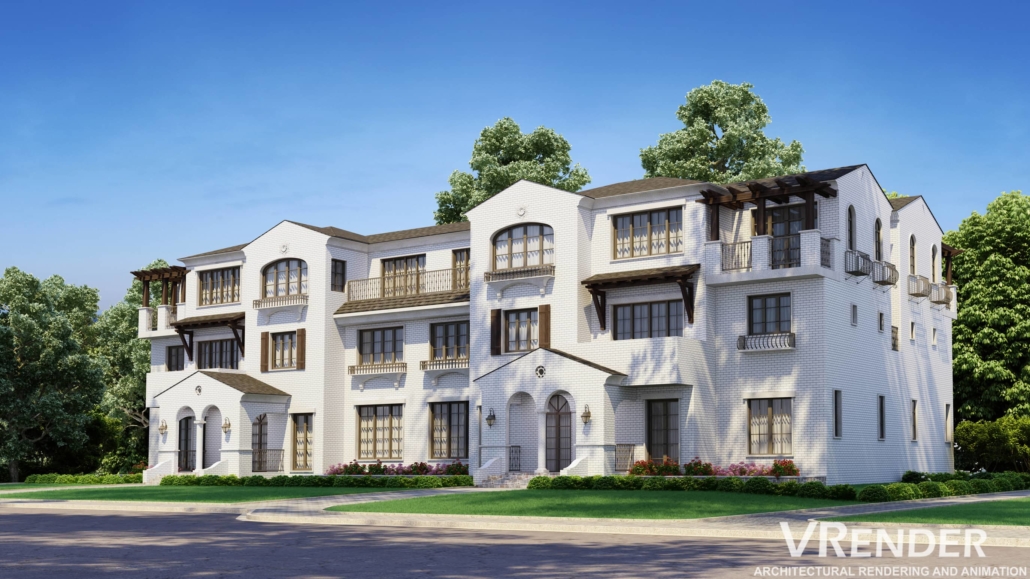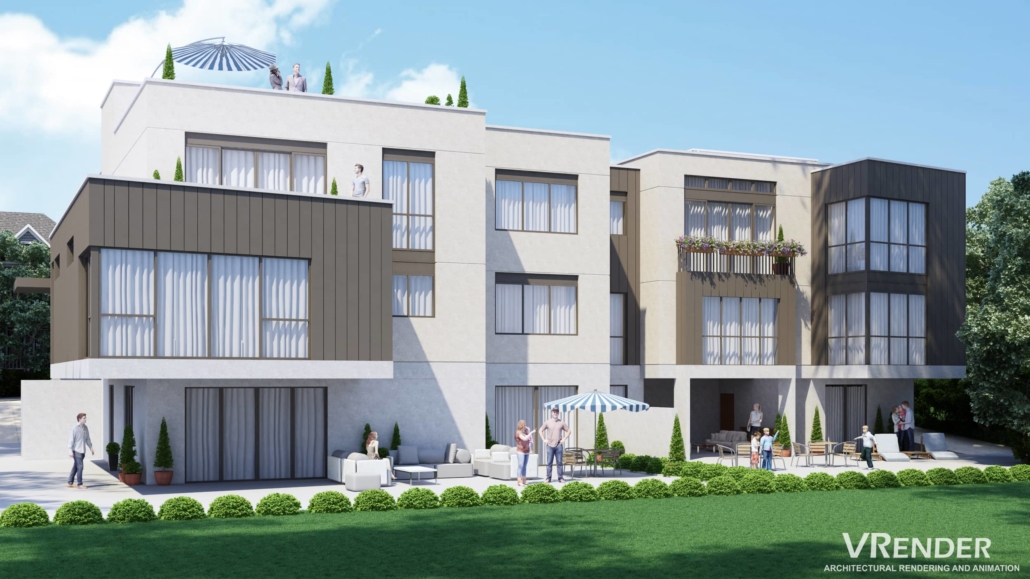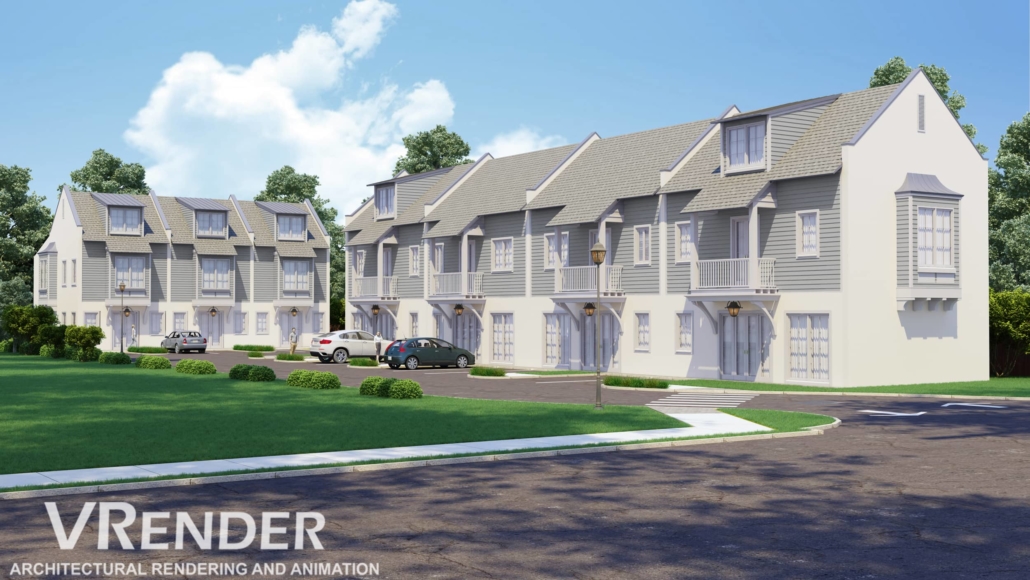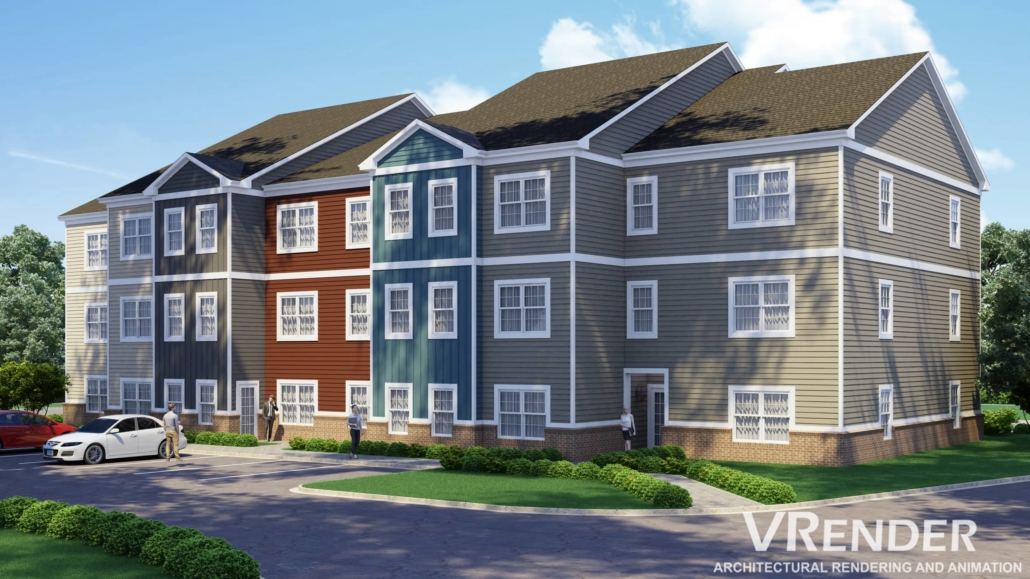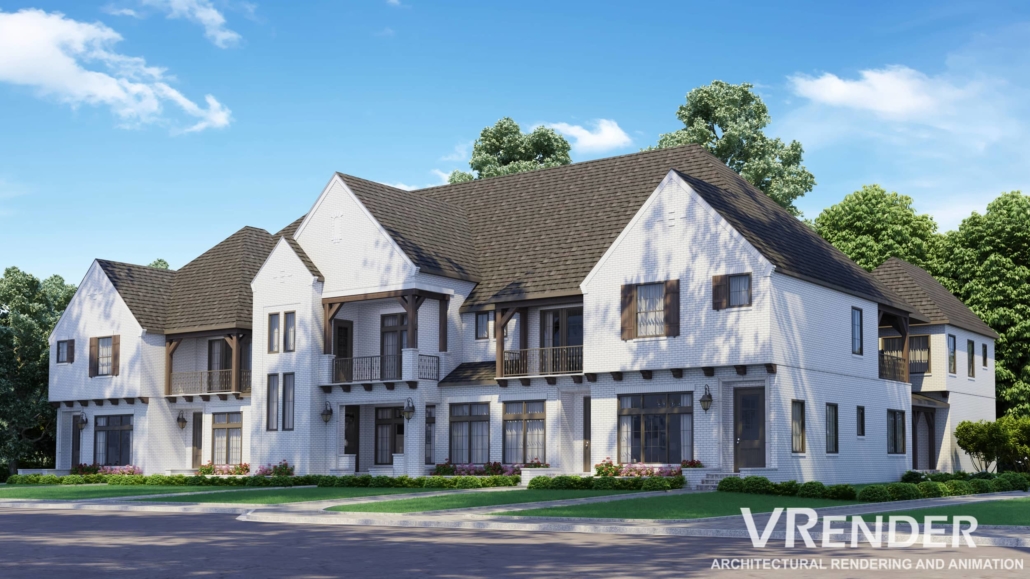In the modern era of real estate development, Townhouse 3D Rendering has become a cornerstone in the marketing and planning of residential projects. With advancements in technology, architects, interior designers, and real estate developers are increasingly relying on 3D visualization to showcase their projects with clarity and precision that was previously unimaginable. In this article, we dive deep into the fascinating world of townhouse 3D rendering, exploring its benefits, processes, and the future it holds in the real estate industry.
The Power of Visualization
Before delving into the specifics of 3D rendering, it’s crucial to understand the incredible impact of visual aids in real estate. People are inherently driven by visual cues, and the ability to present a realistic impression of a property can make all the difference in swaying decisions and attracting potential buyers or investors.
Benefits of Townhouse 3D Rendering
– Enhanced Presentation: 3D renderings offer photorealistic depictions of properties, down to the finest details.
– Better Communication: They facilitate clear communication between designers, developers, and clients, ensuring everyone is on the same page.
– Marketing Muscle: In a competitive market, stunning visuals can set a property apart and captivate audiences.
– Design Validation: Renderings allow for the assessment and refinement of designs before construction begins, saving time and resources.
– Virtual Walkthroughs: Potential buyers can ‘walk’ through a property, experiencing the space and design interactively.
The 3D Rendering Process
To appreciate the transformative power of 3D renderings, one must understand the intricate process behind creating these visuals. Here’s how professionals bring townhouse renderings to life:
Step 1: Gathering Information
In this initial phase, designers collect all necessary information including floor plans, elevations, materials, and any specific design requests from the client.
Step 2: Modeling
Using specialized software, experts create a digital 3D model of the townhouse that serves as the canvas for the rendering.
Step 3: Texturing and Material Application
Details such as wood, glass, concrete, and other finishes are applied to the model to mimic real-life materials accurately.
Step 4: Lighting
Lighting plays a pivotal role in rendering, as it influences mood and realism. Both natural and artificial light sources are strategically placed.
Step 5: Rendering
This is the stage where the computer processes all input data to generate the visual output – the 3D rendering.
Step 6: Post-Processing
Finally, touches are added using image editing software to enhance realism or adjust elements to the client’s liking.
Advanced Techniques in Townhouse 3D Rendering
Professionals in the field utilize a range of advanced techniques to bring townhouse renderings to life. Some key methods include:
– High Dynamic Range Imaging (HDRI): Enhances the lighting quality to give the image a more natural feel.
– Ray Tracing: Simulates the way light interacts with objects, creating realistic reflections and shadows.
– Photomontage: Introduces real-life backgrounds or elements into the rendering to show the structure in its intended context.
Software
A variety of 3D software tools are used to create detailed and accurate 3D renderings. Some of the most popular ones include:
– Autodesk 3ds Max: Widely used for its powerful modeling capabilities.
– SketchUp: Known for its user-friendly interface and extensive library of components.
– V-Ray: A powerful rendering plugin known for its versatility and photorealism.
– Lumion: Favoured for its real-time rendering capabilities.
– Revit: Utilized for its strong emphasis on building information modeling (BIM).
The Iterative Nature of Design and Rendering
One of the significant advantages of 3D rendering is the iterative process it allows. Feedback can be incorporated quickly, and multiple design alternatives can be explored with relative ease, fostering creativity and satisfying diverse client preferences.
Case Studies and Examples
Real-world examples provide the best insight into the impact of 3D rendering. Many townhouse projects around the globe have benefited greatly from these visuals, with developers noting increased interest and a surge in pre-sales as a result of compelling renderings.
The Client’s Perspective: Simplifying Choices
Choosing a home is a significant decision, and 3D renderings offer clients a risk-free method to examine their options. This aspect cannot be overstated, as it empowers clients to make informed decisions with confidence.
Customization and Personalization
With renderings, clients can go beyond standard options and can customize and personalize their future home, experimenting with colors, finishes, and layouts virtually before making any commitments.
The Future of Townhouse 3D Rendering
As we look forward, the boundaries of 3D rendering continue to expand. Emerging technologies such as **Virtual Reality (VR)** and **Augmented Reality (AR)** are set to further revolutionize the way we interact with and experience architectural designs.
Sustainability and Rendering
Sustainability is becoming increasingly significant in the real estate industry. 3D rendering can play a role by visualizing energy-efficient features and environmentally-friendly design elements, promoting greener living spaces.
Artificial Intelligence in 3D Rendering
AI is poised to make the rendering process faster and more intuitive, with algorithms that can optimize lighting, textures, and other elements autonomously, based on the designer’s goals.
Townhouse 3D Rendering: A Vital Tool for Smart Marketing
In an era where online listings dominate real estate marketing, townhouse 3D renderings are invaluable assets. They allow for a **multifaceted marketing strategy**, incorporating digital brochures, interactive property websites, and social media campaigns that feature attractive, detailed visuals of the townhouses.
Competitive Edge
Developers who leverage 3D renderings gain a competitive edge by presenting their projects in the most flattering light possible, attracting higher interest levels and, often, better sales outcomes.
Conclusion
Townhouse 3D rendering is a game-changing tool in the realm of architecture and real estate. It offers tremendous benefits for visualization, communication, and marketing, ensuring that both clients and developers can bridge the gap between imagination and reality.
As we continue to witness the evolution of this technology, it is clear that townhouse 3D rendering will remain at the forefront of property design, presentation, and sales. With the potential to save time and money while simultaneously enhancing the client experience, the future looks incredibly bright for this facet of the real estate industry. Through continued innovation and an increasingly tech-savvy consumer base, townhouse 3D renderings will not only improve but also redefine the standards of real estate visualization for years to come.

